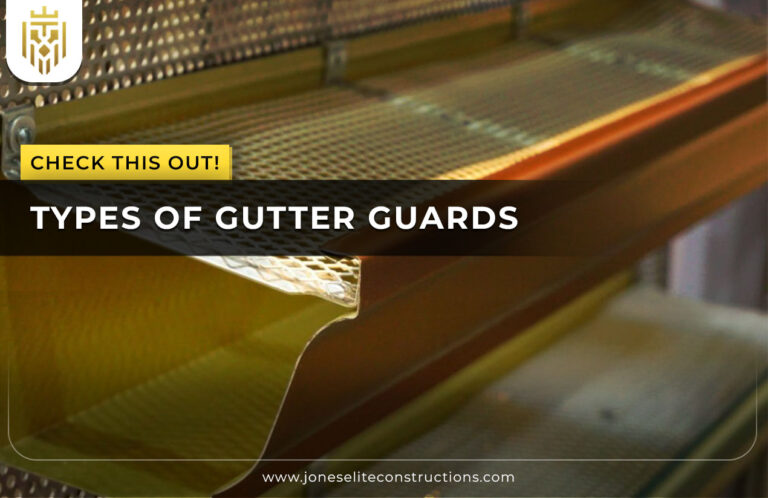What is Professional Lawn Mowing?
A professionally maintained lawn is always an endless centrepiece in every property. From a sprawling backyard to a small patch of grass, mowing the lawn optimally is imperative to make the grass healthy and vibrant.
Expert lawn mowing requires proper understanding of techniques, timing, and maintenance routines to get good results- not straightforward. Follow the expert advice, smart mowing practices, and your lawn will thrive in every season.
Why Proper Lawn Mowing is Important?

Lawn mowing is the most important aspect of lawn care and the most direct influence on your garden’s health, vigour, and appearance. An appropriate mowing regime is going to strengthen roots, encourage growth, and develop a close, lush lawn that resists all pests and weeds.
-
Keeps the grass healthy and thick
Correct mowing height allows your grass to become concentrated and healthy. Grass naturally produces more shoots when mown regularly, without excessive cutting at one time. These shoots develop a dense lawn which gives a fuller appearance and reduces space for weeds to grow.
It also shades the soil and reduces water evaporation and excessive heating to the roots. All these abilities will keep your lawn healthy, even in hot months, and give it a rich green color.
-
Promotes Root Development
Proper mowing encourages healthy root development. Mowing at the correct height and frequency promotes deeper rooting and enables grass to extract moisture and nutrients from deeper soil horizons. Stronger roots are necessary for the drought or extreme temperatures to improve the resilience of your lawn.
-
Prevents Weeds
Mowing the lawn consistently is one of the best deterrents to the spread and encroachment of weeds. By mowing your grass at the recommended height, it naturally limits the chances for weed seeds to fall and become established. It covers the soil, rendering it less accessible for weed germination. Grass also forms a mulch layer when clippings are produced as you mow.
-
Reduces Pest Habitat
Creepy, crawly creatures, rodents, and other pests find overgrown lawns their paradise. Long grass creates moist enclosed spaces, which are good environments for mosquitoes, ants, and even ticks.
Mowing the lawn regularly thus leads to shrinkage of these habitats and improves the circulation of air within the grass canopy, rendering a space less palatable to pests.
-
Improve overall aesthetic appeal
Well-cut lawns make a world of a difference when it comes to the appearance of a property. Neat, straight cuts create orderliness and precision which translate all the way through your outdoor space. A properly maintained lawn works well with the rest of your landscaping, flower beds, and outdoor fixtures to add a clean, classy, welcoming appearance to your home.
When to Mow Your Lawn?
The timing of your lawn mowing routine can greatly impact the health and appearance of your grass. Knowing when to mow ensures your lawn can recover quickly and continue to grow strong.
-
What is the Best Time of Day to Mow the Lawn?
For the obstinate and tissue-clogging mower, the best time to consider cruelty-free lawn mowing is during the morning from 8 am to 10 am or during the late afternoon from 4 pm to 6 pm. The temperature has been balanced enough so that the turf has dried up from morning dew or nights spent under damp conditions.
Undergoing dry mowing would produce cleaner cuts and would prevent many diseases. You should also avoid mowing in the middle of the day when the sun is overhead regarding lunchtime since it will incur lots of stress to that grass, making it vulnerable to injury and dehydration.
-
How Often Should You Mow the Lawn?
This is dependent on the type of grass in the yard, the speed of growth, and the time of year. Grass usually grows fast during spring and in early summer, and so most people will mow once a week to keep it at the right height. Towards the end of summer into autumn, growth slows down naturally, and so one can often have a schedule of mowing the lawn biweekly.
Lawn mowing usually doesn’t occur in winter unless, of course, you live somewhere with mild weather, where the grass might grow, albeit slower. Ensuring that you comply with a set mowing schedule in accordance with the seasons will give you a healthy, neat, and beautiful lawn throughout the year.
How to Mow Your Lawn Properly

Achieving a professional-looking lawn requires more than simply pushing a mower across the grass. Using the right techniques and tools can make a remarkable difference in your results.
-
Prepare Your Lawn
Before mowing, take some time to prepare the lawn. Remove anything that might interfere with mowing, including branches, stones, or children’s toys, which can bruise the blades of the mower or create an uneven cut. Check if your mower is set with sharp blades at the proper height. Blunt blades tear off the grass instead of cleanly cutting it, causing brown, frayed edges.
-
Follow the One-Third Rule
The one-third rule is a truly golden rule: one should not cut one-third of the grass blades’ height all at once. Cutting too much at once stresses the grasses and exposes the soil; therefore, your lawn becomes a target for pests, diseases, and weeds. If your lawn is too tall, mow it in stages where you slowly reduce the height instead of scalping it in one go.
-
Use the Right Mowing Pattern
Mow in a different direction each time to prevent the grasses from leaning one way or the other. The variation in patterns will not simply encourage upright growth but will equally ensure an even trim across the entire lawn. Diagonal or criss-crossing patterns work especially well to give the lawn that professional touch.
-
Mow at the Right Time
Mow only when your grasses are not wet. Wet grasses bend and clump together, which makes it more difficult to cut clean. When it is wet, clippings can clog your mower and cause nasty patches on the lawn.
-
Leave Grass Clippings (Mulching)
Instead of bagging, leave the mowed grass clippings on the lawn as mulch. Fine clippings decompose quickly, supplying nutrients to the soil and reducing the application rate of fertiliser.
-
Edge and Trim for a finished look
For a truly professional finish, edge along the pathways, patios, and flower beds. A string trimmer or edging tool creates crisp, defined lines that elevate the charm of your lawn.
Common Lawn Mowing Mistakes to Avoid
Even seasoned gardeners can make mistakes that compromise lawn health. Avoid these common errors to keep your lawn looking its best.
-
Cutting Grass Too Short
Scalping the lawn by cutting it too short weakens the grass and makes the soil open to salting and spoils. Additionally, shorter grass has a much lower capacity for moisture retention, thus susceptible to drought stress and wilting. A slender height-typically 5-7cm-should be maintained for a most of the grass on the lawn since it should stay energetic and strong.
-
Mowing with Dull Blades
Dull mower blades tear off grass instead of cutting it cleanly; therefore, ragged, uneven edges are more prone to drying out and turning brown. Such cuts can also increase the risk of lawn diseases, as the damaged tips provide entry points for fungi and bacteria. For this to be prevented, sharpen your mower blades regularly, ideally after every 20 to 25 hours of mow . When they are worn excessively, change them.
-
Ignoring Mower Maintenance
Neglecting lawn mower maintenance is really bad since it does influence one’s mower performance. Clogged, dirty deck could affect air flow to the mower and causes it to strain and end up cutting into uneven patches on the lawn. A dirty air filter limits the efficiency of your engine, while low or old oil might cause the engine to overheat.
Generally maintaining your mower deck and changing oil and air filters as necessary will have it running properly with results between cuts also being pretty consistent.
-
Mowing in the Heat of the Day
Mowing will put a stress on your lawn since it will cut through grass when that intense heat is upon it. The cut blades, with added intensity of sunlight, create a losing effect with moisture, and, eventually, wilting or brown patches develop. Plus, mowing in extreme heat puts undue strain on your mower.
Thus, you have to mow at cooler periods, like early morning or late afternoon periods when temperatures are licked, so the grass has better recovery conditions.
Seasonal Lawn Mowing Tips
Your lawn’s needs change throughout the year. Adapting your mowing habits to suit each season will help maintain its health and appearance.

-
Spring Lawn Mowing
Regular mowing of the lawn should take place during spring but with the mower blade set particularly high, as this will encourage the shoots to grow new ones and increase the rooting. Cutting regularly at this stage prevents grass from growing too long and thus difficult to handle as growth tends to accelerate.
-
Summer Lawn Mowing
When It comes to summer mowings, mow less frequently, and raise the height at which the blades will find the grasses to leave them growing tall, dry, and well-soiled; avoid mowing from early in the day to when it is hottest.
-
Fall Lawn Mowing
Lower the mowing height gradually during the fall to limit the risk of snow mould and establish a more substantial root system for winter survival. Mow after clearing fallen leaves to increase air circulation and prevent wet conditions conducive to disease.
FAQs
1) What is the Best Time of Day to Mow the Lawn?
Morning or late afternoon is ideal for minimising stress on the grass.
2) Why is it important to mow the lawn?
Mowing encourages healthy growth, improves density, and enhances your lawn’s appearance.
3) What is the correct way to mow a lawn?
Follow the one-third rule, mow when the grass is dry, and alternate mowing patterns for the best results.
4) What is the golden rule of mowing?
The golden rule is to never cut more than one-third of the grass blade’s height at once.









